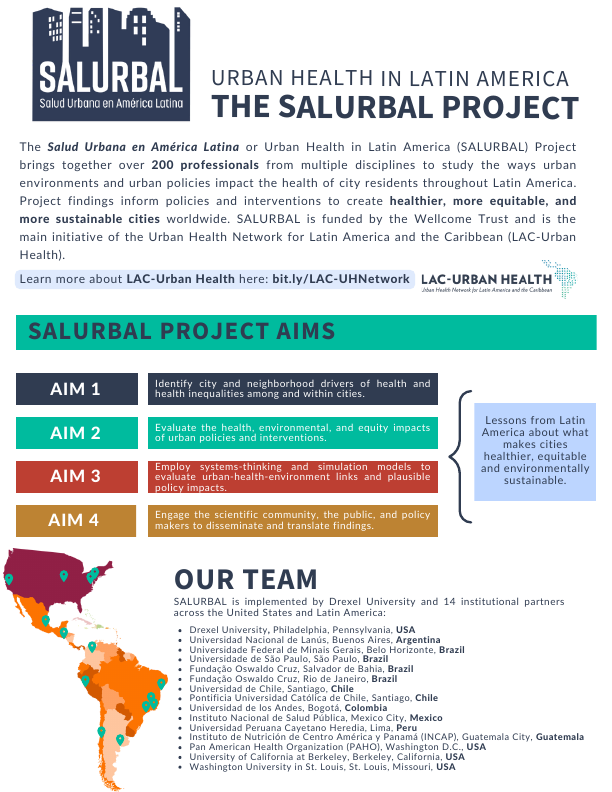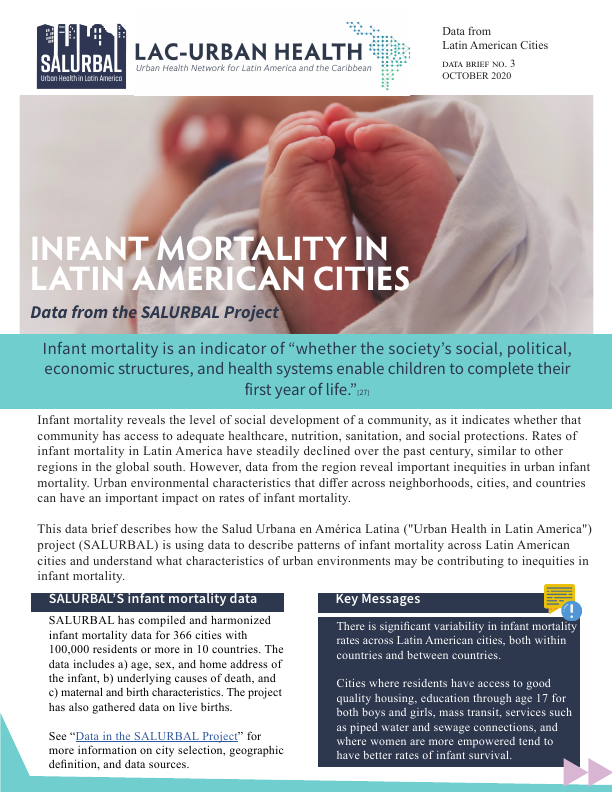
Data Briefs
Key data insights for informed decision-making in Latin American cities.
Latest Data Briefs

The demand for information about Afro-descendant and Indigenous populations and their living conditions—driven in large part by social movements—has been a growing and recurring issue in Latin America. Though the region still has limitations in the availability of reliable data, important efforts have taken place to advance this agenda. This brief outlines lessons learned from Latin American countries. To advance research and action on racial/ethnic health inequities in Latin American countries, local, state, and national decision-makers must improve the collection of high-quality data on race and ethnicity and make it available to researchers and all society.

Data in the SALURBAL Project | provides an overview of the process of selecting cities, compiling data, and the types of questions the dataset may help to answer. The document was developed to inform future SALURBAL studies and to receive feedback from stakeholder working in urban health in the region regarding how SALURBAL research can support their efforts. (October 2022)

The Latin America and Caribbean (LAC) region is one of the world regions hardest hit by the pandemic. This brief the current state of the COVID-19 pandemic using data compiled by the Salud Urbana en América Latina ("Urban Health in Latin America") project (SALURBAL). The brief includes information on the number of cases, deaths, and vaccinations reported, as well as socioeconomic inequities in these outcomes in Latin American cities. Policy approaches and actions that some cities and countries have implemented to improve data quality and reduce inequities are highlighted.

This data brief describes how the Salud Urbana en América Latina ("Urban Health in Latin America") project (SALURBAL) is using data to describe patterns of infant mortality across Latin American cities and understand what characteristics of urban environments may be contributing to inequities in infant mortality.

Life expectancy and causes of death vary greatly across urban areas in Latin America, and global and regional summaries of life expectancy and causes of death can hide significant variability across cities. Urban environments that differ across neighborhoods, cities, and countries can have a major impact on life expectancy and causes of death. | Mortality and Life Expectancy in Latin American Cities | presents the experiences of the SALURBAL project in harmonizing and describing mortality data across 366 cities in 10 countries.